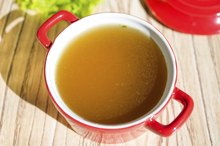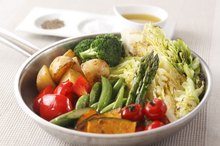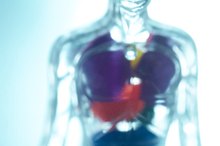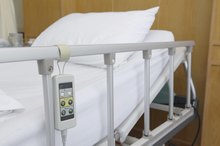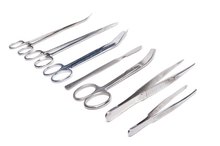Special Diet for Post Kidney Stone Removal Surgery
Kidney stones are rock-like formations that develop in or near the kidneys. They are composed of various minerals, usually calcium. Certain kidney stones may require surgery.
The type of procedure depends on where your kidney stones are located and how large the stones are.The diet following kidney stone removal generally varies on the exact procedure performed 2. Consult your physician for more detailed dietary guidelines tailored for your circumstances.
Kidney Stone Surgeries
**Most surgeries to remove kidney stones are non-invasive.
Extracorporeal shock-wave lithotripsy can break up small kidney stones that are less than ½ inch so that you can then pass the stones in your urine. Ureteroscopy is a procedure to remove kidney stones in the middle or lower urinary tract. In noninvasive percutaneous nephrolithotomy, doctors use an endoscope to remove large stones in or near the kidney 34. Standard invasive surgery may be required if the other methods do not work. The surgeries require different aftercare and diet. **
- Most surgeries to remove kidney stones are non-invasive.
- In noninvasive percutaneous nephrolithotomy, doctors use an endoscope to remove large stones in or near the kidney 3.
Fluids
A Clear Liquid Diet Before a CT Scan
Learn More
For non-invasive kidney stone surgeries, your fluid intake following surgery is important. Drugs.com recommends consulting your physician to find out how much fluid you should have per day. Generally, you should drink at least 64 oz. of water per day.
Drinking a large amount of fluid helps remove any remaining pieces of the kidney stones that are left behind. Fluids also help prevent future kidney stones from developing. Avoid beverages with caffeine, such as soda, coffee and tea, following kidney stone removal surgery 2.
- For non-invasive kidney stone surgeries, your fluid intake following surgery is important.
Diet
There is usually no special diet following noninvasive kidney stone surgery, although you should consult your doctor for guidelines. However, a healthy diet can help you recover faster from the procedure. Your diet should include foods from all of the food groups. Eat plenty of fruits, vegetables, protein and whole grains. Your doctor may recommend that you avoid certain foods depending on the type of stone you had to prevent future occurrences.
- There is usually no special diet following noninvasive kidney stone surgery, although you should consult your doctor for guidelines.
- Your doctor may recommend that you avoid certain foods depending on the type of stone you had to prevent future occurrences.
High Fiber
What to Eat & Not Eat in Preparation for a Colonoscopy
Learn More
After a percutaneous nephrolithotomy procedure, it may be difficult to have a bowel movement 34.
Eat foods high in fiber to help facilitate a bowel movement. Foods such as whole grain breads, vegetables and beans are good sources of fiber. Prune juice may also help soften stools, according to Drugs.com. Speak to your physician before taking fiber supplements or a laxative. Walking or other regular exercise may also help improve regular bowel functions.
- After a percutaneous nephrolithotomy procedure, it may be difficult to have a bowel movement 3.
- Eat foods high in fiber to help facilitate a bowel movement.
Open Surgery
A standard percutaneous nephrolithotomy, or PCNL, is an invasive major surgery to remove kidney stones 345. For this surgery, you will be in the hospital for five to six days. Doctors provide fluids intravenously for the first one to two days after surgery.
After that, you will be required to drink large amounts of fluid to help remove any remaining kidney stones. Often following a PCNL, you can eat ice chips and drink small amount of liquid with your I.V. Usually by the day after surgery, you can begin to eat regular foods.
- A standard percutaneous nephrolithotomy, or PCNL, is an invasive major surgery to remove kidney stones 3.
- Often following a PCNL, you can eat ice chips and drink small amount of liquid with your I.V.
- Usually by the day after surgery, you can begin to eat regular foods.
Related Articles
References
- PubMed Health; Kidney Stones; January 2009
- Drugs.com: Ureteroscopic Kidney Stone Removal
- Drugs.com: Percutaneous Nephrolithotomy
- Encyclopedia of Surgery: Nephrolithotomy, Percutaneous
- James Buchanan Brady Urological Institute: Percutaneous Nephrolithotomy (PCNL)
- National Institutes of Health. Eating, Diet & Nutrition for Kidney Stones. Updated May 2017.
- Cereda M, Kennedy S. Cereda M, Kennedy S Cereda, Maurizio, and Sean Kennedy.Chapter 61. Anesthetic Considerations for Genitourinary and Renal Surgery. In: Longnecker DE, Brown DL, Newman MF, Zapol WM. Longnecker D.E., Brown D.L., Newman M.F., Zapol W.M. Eds. David E. Longnecker, et al., eds. Anesthesiology, 2e. New York, NY: McGraw-Hill; 2012.
- Hwang JQ, Poffenberger C. Hwang J.Q., Poffenberger C Hwang, James Q., and Cori McClure Poffenberger.Chapter 10. Renal and Urinary System Ultrasound. In: Carmody KA, Moore CL, Feller-Kopman D. Carmody K.A., Moore C.L., Feller-Kopman D Eds. Kristin A. Carmody, et al., eds. Handbook of Critical Care and Emergency Ultrasound. New York, NY: McGraw-Hill; 2011.
Writer Bio
Ireland Wolfe has been writing professionally since 2009, contributing to Toonari Post, Africana Online and Winzer Insurance. She obtained her Bachelor of Arts in psychology and Master of Arts in mental health counseling. She is also a licensed mental health counselor, registered nutritionist and yoga teacher.



